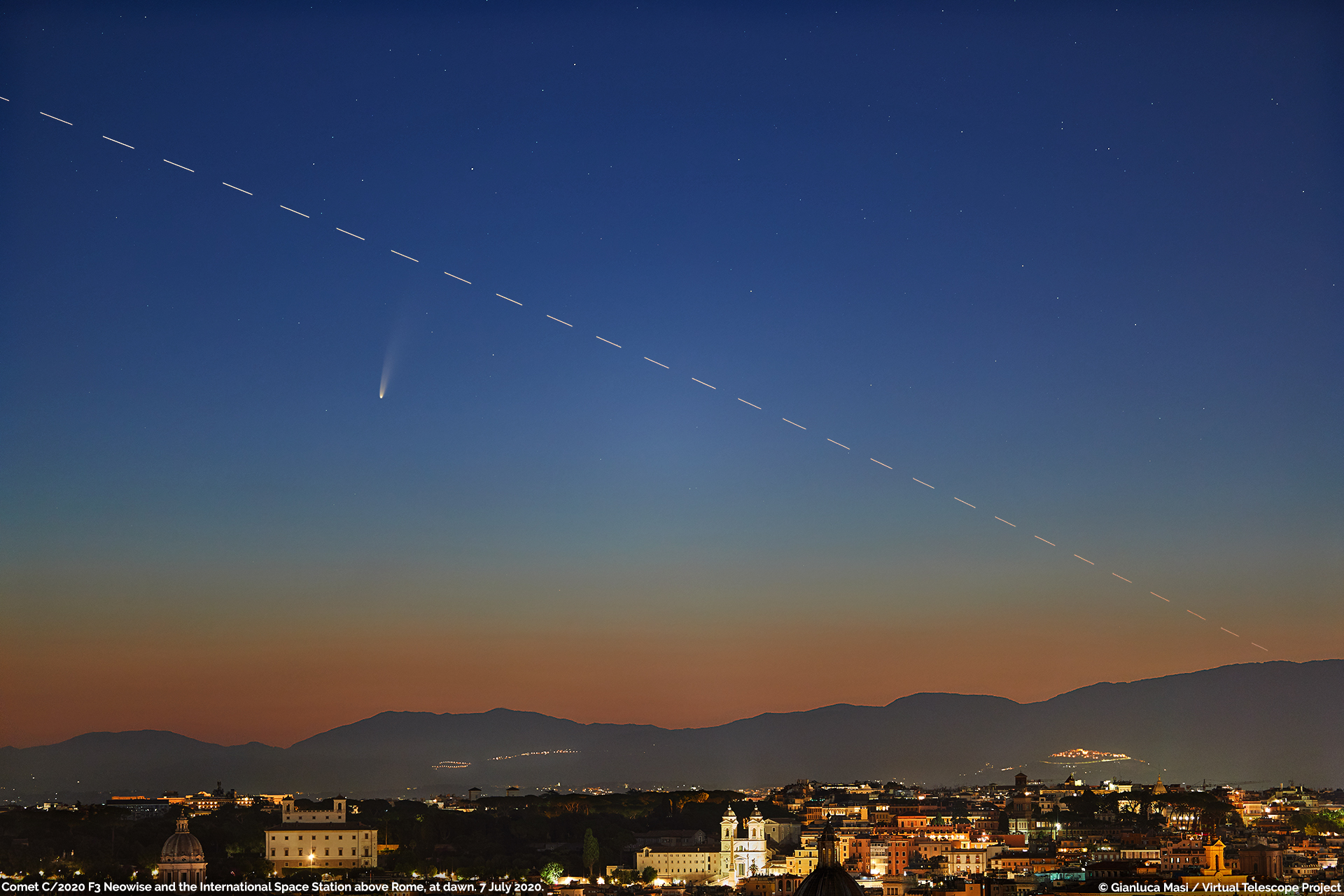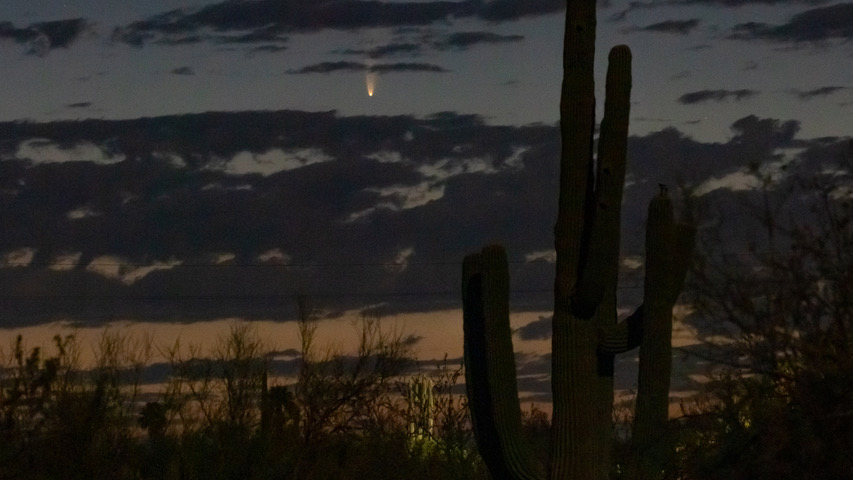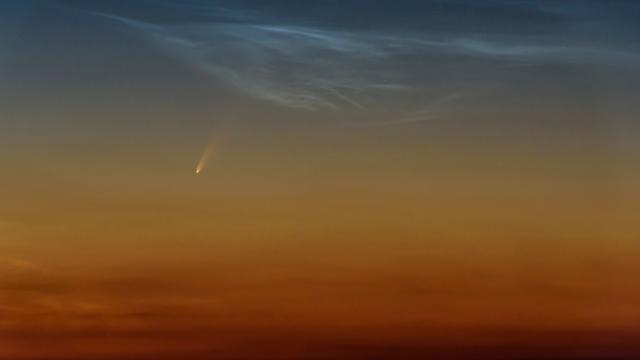Comet NEOWISE has completed its close approach to the Sun and is now returning from whence it came. Visible comets like this don’t come around often, so you’re going to want to see this celestial wonder with your own eyes before it’s too late. Here’s how.
Comet C/2020 F3 NEOWISE reached perihelion on July 3, placing it just inside Mercury’s orbit. Its closest approach to the Sun complete, the comet is now heading back toward the outer reaches of the solar system. Its surface is still being warmed by the Sun, however, resulting in a glowing coma and two cometary tails, one consisting of gas and one of dust.
[related_content first=”1230410″]

Visible comets like this are relatively rare, appearing about once a decade. The comet is now reportedly being seen at magnitudes between 1 and 2, which is bright enough to be seen across the Northern Hemisphere, but, to be fair, this comet is really faint. Patient observers may be able to see it with the unaided eye, but devices like binoculars, telescopes, and zoom lenses on cameras will certainly help. Photographers should capture a long-exposure image, just a few seconds worth, while pointing their camera at the comet, advises EarthSky.
The comet was discovered by the NEOWISE space telescope on March 27, 2020, using its infrared heat-sensitive channels.

“In its discovery images, Comet NEOWISE appeared as a glowing, fuzzy dot moving across the sky even when it was still pretty far away,” said Amy Mainzer, NEOWISE principal investigator at the University of Arizona, in a NASA press release. “As soon as we saw how close it would come to the Sun, we had hopes that it would put on a good show.”
I have a strong dislike of early mornings—but so worth it today because wow is that comet beautiful! C/2020 F3 (NEOWISE) I was at Sunset Crater by 4AM. It was an easy naked-eye object, but really rewarding through binoculars. Last pic is closest to naked eye scale.#neowise pic.twitter.com/1I0Cx2fZQJ
— Jeremy Perez (@jperez1690) July 5, 2020
From now until July 11, observers in the northern hemisphere can see comet NEOWISE in the northeastern morning sky close to the horizon. This applies to people living in the United States, Canada, Europe, and elsewhere north of the equator. The comet has been visible from the Southern Hemisphere for a while now.
Sadly, the comet is visible just as the Sun is rising, so it can’t be seen against a dark night sky. When you go out to see it, try to follow this advice from International Dark Sky Places, an advocacy group for reducing light pollution:
To see the comet, go outside early in the morning, about an hour before sunlight appears on the horizon, and face toward the Northeast. Hold your fist out at arm’s length. Align the lower part of your fist with the horizon. The comet will be visible about halfway between the horizon and the top of your fist.
Earthsky has compiled some handy charts for reference. This tweet from amateur astronomer Stuart Atkinson is also helpful.
Where will Comet #NEOWISE be in the (late!) evening sky during July? This easy to use chart will show you – basically just look for the Big Dipper/Plough and “star hop” to the comet from there. Hopefully naked eye bright but have binocs ready in case it isn’t. 🙂 Chart 1 of 2 pic.twitter.com/rgYlWe0V9j
— mars_stu (@mars_stu) July 3, 2020
Importantly, these viewing guidelines will only apply until Saturday July 11, after which time the comet will increasingly become visible just after sunset and to the northwest horizon, according to Earth Sky. Assuming comet NEOWISE doesn’t disintegrate ” a distinct possibility, as this happened to comet C/2019 Y4 (ATLAS) earlier this year ” it’ll be visible until mid-August.
At best, you’ll likely see comet NEOWISE as a blurry dot. Using binoculars or a telescope, however, will likely reveal finer features, including its tail. And as the steady stream of splendid long-exposure shots are demonstrating, photography is yet another excellent way observe this comet.
According to NEOWISE deputy principal investigator Joseph Masiero, comet NEOWISE is around 5 km wide, and its coma is “covered with sooty, dark particles leftover from its formation near the birth of our solar system 4.6 billion years ago,” he explained in a University of Arizona press release.
The comet poses no threat to Earth, as it won’t get any closer to our planet than 103 million km. Comet NEOWISE may not be the brightest comet, but you’re going to want to try to catch a glimpse. The comet won’t return to these parts for another 6,800 years.
